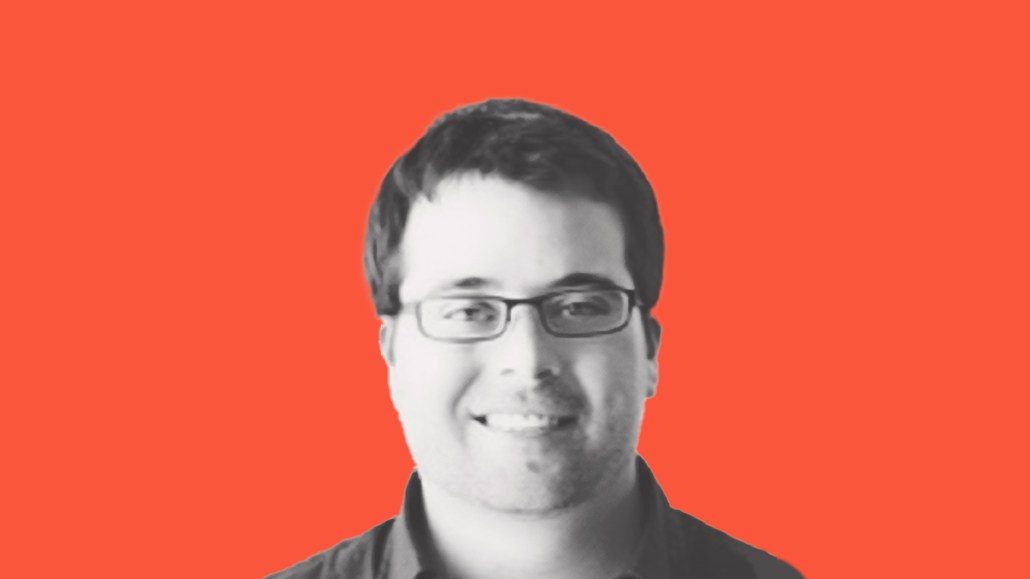Save 50% on a 3-month Digiday+ membership. Ends Dec 5.
Why Frito-Lay’s vp of creative rejects ‘us against them’ rhetoric in in-housing trend

At this point, more marketers have in-house agencies than in years past, making it a mainstay in the industry. At least that’s the case according to the ANA’s latest report on in-housing. The argument for in-house marketing is often tied to speed, efficiency and the overall need for more control. But not all executives are completely sold on the everything in-house movement.
“There’s certain things as an external agency, and an external agency size and network [is] able to provide, that I would have to build entire departments to be able to scale up to the same level,” said Chris Bellinger, vp of creative and digital at Frito-Lay North America and Quaker. Bellinger also heads up the global snack maker’s in-house creative agency D3.
D3 recently produced campaigns like PopCorners’ “Breaking Good” Super Bowl ad and Frito-Lay’s sponsorship of the FIFA World Cup with the “Is It Called Soccer or Football?” Meanwhile, there are up to a dozen external agencies Frito-Lay’s works with across its brands to manage different functionalities, per Bellinger. For example, Ketchum public relations firm manages the company’s communication efforts while OMD handles its media buying and activations.
Within the last five years, the D3 team has grown from two staffers to 85 today, managing account strategy, social media, creative, production and multicultural efforts.
Digiday recently caught up with Bellinger to talk about the in-house versus external agency balancing act, why there’s heightened cautiousness around artificial intelligence and how D3 is feeding the social media content beast.
This interview has been lightly edited for clarity.
What’s the makeup of D3? What does the agency do for Frito-Lays’ portfolio of brands?
Ad position: web_incontent_pos1
We operate like a full 360-internal agency and we get to partner directly with our brand teams. The speed at which we’re able to react to culture is really our prime mover advantage. The last five years is when we’ve really leaned in and overhauled this entire in-house, D3 organization and really built it into what is now. We are an adoption type of model. No one’s forced to us and I love working with our external agency partners because I don’t think we should move everything internally. But I do love the idea of more and more brands getting on board, finding the value in what we’re doing from social and 360 campaigns and content and everything else that we’re doing.
Your internal creative agency has been around for at least the last five years. Does it save Frito-Lay time or money?
There’s always efficiencies that always exist. That’s something you really can’t deny. But that hasn’t been the prime motivator. The real prime motivator has been: How can we stay closer to consumers, stay faster with the speed of culture? This just gives us that opportunity. It’s easier to walk down the hall and say, “Hey, I’ve got an idea. What do you think about this?” or “Look at what I just shot on my iPhone.” At the speed of which social moves, it was really necessary to be able to activate and build those things as consumers and fans.
If there are efficiencies, why not move everything in-house? Why maintain external agency partnerships?
There’s a difference [in the] level of perspective, edge and components that come from the external agency side of things. Being a formal external agency kid myself, I see the value. And I see the value of internal and in-house. They both can work together. I don’t think it’s an all or nothing thing. For experiential and events, for specific targeted types of marketing and strategies. Right now, internally, we don’t have strategists and planners. I have community and content strategists and creative strategists. Part of the internal mantra when I came in was, we’re never going to pitch. I don’t want to pitch against an external agency that’s going to result in a win or loss of business. That helps us from an internal standpoint because pitching can be really exhausting, but also creates a competitive nature and a competitive environment. I was external. I know the feeling and I know the impression that that has.
Ad position: web_incontent_pos2
With its capabilities, has there been experimentation with artificial intelligence at D3?
You’re asking the same question everybody’s asking around AI. PepsiCo (Frito-Lay North America’s parent company) as a whole, we’re being very cautious and very intentional about how we’re leveraging AI. It’s less of a wait and see and more of a want to make sure that we’re doing it right. We want to make sure we’re putting our brand safety and everything else at the forefront of what this is. The generative AI, that’s where you want to make sure that you’re getting it right. Everybody’s always experimenting and practicing with it, but want to make sure that we’re doing it in the right ways.
More in Marketing

Ulta, Best Buy and Adidas dominate AI holiday shopping mentions
The brands that are seeing the biggest boost from this shift in consumer behavior are some of the biggest retailers.

U.K. retailer Boots leads brand efforts to invest in ad creative’s data layer
For media dollars to make an impact, brands need ad creative that actually hits. More CMOs are investing in pre- and post-flight measurement.

‘AI is permeating everything we do’: How Guitar Center developed 2 AI tools this year
This summer, the company launched a chatbot called Rig Advisor to help customers find the right instruments and products.
Ad position: web_bfu




